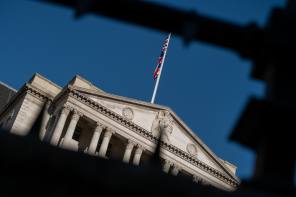

The Bank of England (BoE) has revised down growth expectations for 2017 but warned interest rates would rise faster than forecast by the market, should the UK negotiate a favourable exit from the EU.
In May's Inflation Report, the central bank predicted GDP would be 1.9 per cent in 2017, a 0.1 percentage point downward revision from its February estimate. This was due to a weaker than expected Q1 performance extending into the second quarter.
The 2017 GDP revision was essentially offset by predictions for 2018 and 2019, when the BoE said growth would be 1.7 and 1.8 per cent, marking upward revisions of 0.1 percentage points.
Inflation this year would also be higher than previously estimated according to the latest report, despite sterling rising by 2.5 per cent since the last publication. However, inflation is expected to fade away quicker than predicted in February due to the currency's appreciation.
"Higher import prices are projected to lead to a further rise in CPI inflation this year, such that it reaches 2.8 per cent in Q4," the report said.
It added: "The impetus from import prices is likely to fade only gradually throughout the forecast period. Its projected contribution to inflation at the three-year horizon is just over 0.25 percentage points, smaller than in February following the 2.5 per cent appreciation of sterling since then."
Inflation at the end of Q1 2017 was 2.7 per cent versus a 2.4 per cent prediction. Estimates for 2018 and 2019 have been revised down.
The Monetary Policy Committee (MPC) also announced that its interest rate and quantitative easing policies remained unchanged, with the committee voting 7-1 not to change rates.
However the MPC warned that its current projections were based on a "smooth rather than disorderly" Brexit process, the outcome of which could lead to faster rate rises than those currently predicted by markets.
"The projections in this report continue to be conditioned on the average of a range of possible outcomes for those arrangements and, as before, the assumption that the adjustment to the United Kingdom’s new relationship with the European Union is smooth," the report said.
The BoE suggested a fall in the future market-implied interest rate following the February report would be incorrect if the UK secured such a "smooth" exit. Forward bank rates have fallen by around 0.2 percentage points since February, and now stand at 0.5 per cent by Q2 2020.
"If the economy follows a path broadly consistent with the May central projection, then monetary policy could need to be tightened by a somewhat greater extent over the forecast period than the very gently rising path implied by the market yield curve underlying the May projections," the report said.
The BoE also suggested a slowing in consumption growth - led by weak wage inflation - would continue in the forecasted period to 2019. Domestic inflationary pressure remained "subdued", according to the report, making it difficult to analyse where inflation would settle once sterling weakness was removed.
| How the BoE's GDP forecasts have changed | |||||
| Year | |||||
| 2016 | 2017 | 2018 | 2019 | ||
| Inflation Report Date | May-16 | 2 | 2.3 | 2.3 | - |
| Aug-16 | 2 | 0.8 | 1.8 | - | |
| Nov-16 | 2.2 | 1.4 | 1.5 | 1.6 | |
| Feb-17 | 2.2 | 2 | 1.6 | 1.7 | |
| May-17 | - | 1.9 | 1.7 | 1.8 | |



